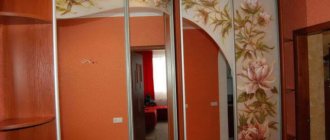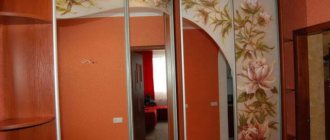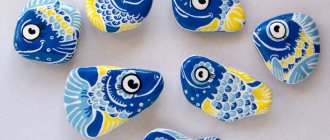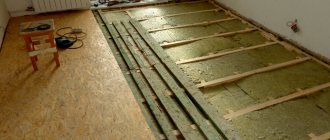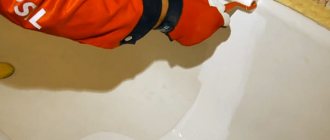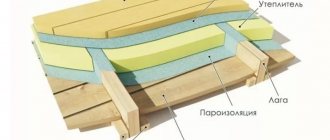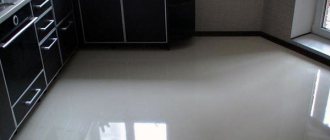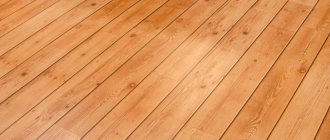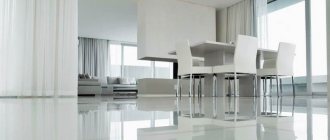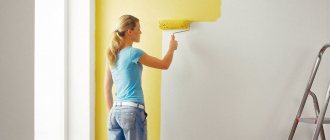The glass of a modern car is a rather complex structure, which is being improved and improved every year. If at first glance you cannot distinguish a car glass from a window in a house, then after studying the structure of the glass in a car, everything falls into place. Manufacturers of foreign cars care primarily about the safety of the driver and passengers. As for 100% visibility, sometimes you need to put in your own efforts.
Perhaps the issue of degreasing glass may seem trivial and simple to some, but do not forget that new products hit the road every day. It is these people who need to start their “together” life with simple basics. So, let's degrease car windows. A dirty window can interfere with normal visibility of the road, and this affects the safety of the driver and passengers. We will also consider other cases when it is necessary to degrease glass.
Types of painting materials for glass
There are several main types of coating depending on the purpose of application and the basis for production.
For stained glass
Stained glass paints are a decorative material that is abrasion-resistant and resistant to water and sunlight. Stained glass paints allow you to decorate mirror surfaces, glass vases, dishes, photo frames, etc.
Before using a set of stained glass paints with stained glass windows, it is necessary to apply an outline that will prevent the coloring composition from spreading. After drying, stained glass paints become transparent. The paint kit most often includes stained glass varnish for applying contour lines.
There are organic solvent materials and water-based paints, which differ in their area of application.
Acrylic
These water-based materials are opaque and their application is reminiscent of oil painting. For application, it is better to use a wide brush, and if the surface has a large area, then it is worth taking an acrylic composition in the form of an aerosol.
Oil based
Oil paints are opaque, so they are intended for painting matte surfaces. Before application, they must be diluted with an oil topcoat, which makes the material resistant to water with the addition of detergents. However, the coating is not heat-resistant.
Silicate based
Silicate heat-resistant glass coatings resemble watercolors, but they must be cured at temperatures between 700 and 800°C. This can be done at home in the oven, if the size of the product allows.
Bitumen, insects, kidneys - testing 18 cleaning products
September 12, 2022
The idea of the examination was suggested by an incident. A colleague complained that he couldn’t clean the windows of his car, which had been sitting under the trees for a couple of weeks. Nothing takes away the resulting film!
For the first battle with the “wood” film, we naively mobilized some available means... and lost. No amount of cleaners for the dashboard or other interior parts could cope with it. It seems that the “tears” of trees have been supplemented by industrial waste floating in our air. All this literally “welded” into the surface of the glass in the hot sun.
The “Vedashka” (WD‑40 liquid) that came to hand almost wiped the “window to Europe” in the film. And the carburetor cleaner that was lying around showed itself very well. The xylene/toluene base did not disappoint. Just do not forget that these are the strongest and very toxic solvents, they should only be used in emergency cases. We did not wipe the glass with gasoline, so as not to dissolve the rubber seals along with the dirt.
The origin of such a film is vegetable, with an admixture of chemical precipitation that fell from heaven. The origin of such a film is vegetable, with an admixture of chemical precipitation that fell from heaven.
How then can you safely and effectively remove stubborn dirt? There are specialized glass cleaners. These are not liquids poured into the washer reservoir, but preparations for manual washing.
We tested 18 such drugs. In addition to the program, we also tested several folk remedies: ammonia from the pharmacy, the Fairy household remedy, and just hot water. Highly specialized preparations intended to remove, for example, resin or traces of adhesive tape were not intentionally used. This time we were interested in broad-spectrum products.
Descriptions of drugs are in alphabetical order. The results of the examination relate to a specific sample of products and cannot serve as a basis for conclusions about the quality of products of a particular brand as a whole.
How they checked
The main testing ground was the windshield of the Granta editorial office. We divided it with construction tape into two dozen sectors, after which we applied specially selected pollutants to each: bitumen, the remains of flying and blood-sucking creatures (borrowed bait from fishermen), tape (the adhesive layer of store price tags), polyurethane foam, fruit juice.
Preparation for testing: Granta glass is marked into “allotments”. Preparation for testing: Granta glass is marked into “allotments”.
A few words about the choice of pollutants. Bitumen and tape are the most common unwanted guests on car windows.
Adhesive price tags helped to simulate the dirt that forms on glass after removing various stickers (for example, “Spikes” or “Child in the car”). No car wiper can handle polyurethane foam and dried orange juice. As with the “wood” film mentioned above: a colleague provided his car for testing.
He did not need preliminary marking: the surface was sufficient for all pollutants.
We work segment by segment, trying to remove sun-baked contaminants. We work segment by segment, trying to remove sun-baked contaminants.
Granta spent the next two days at rest, at an air temperature of 18 to 38 °C. Each of the preparations had to treat their own section of the Granta glass surface, after which, as an option, they had to demonstrate their abilities on a machine with a “woody” film - a substance of plant origin.
| 1. Allegrini Dik Vetri, Italy. Detergent for glass and hard surfaces1. Allegrini Dik Vetri, Italy. Detergent for glass and hard surfaces Approximate price 290 rub. Volume 750 ml This product easily removed insect remains and fruit juice. Remaining foam also did not cause any problems. I had to work hard on the tape, the bitumen didn’t give in at all, and the “wood” film didn’t give in either. | 2. Astrohim AC-373, Russia. Glass cleaner2. Astrohim AC-373, Russia. Glass cleaner Approximate price 170 rub. Volume 520 ml Only bitumen did not succumb to the product; other contaminants were removed without much effort. The product did make a hole in the “wood” film. Very good! | 3. Astrohim AC-375, Russia. Glass cleaner3. Astrohim AC-375, Russia. Glass cleaner Approximate price 120 rubles. Volume 500 ml The drug performed a little worse than its namesake (No. 2), stumbling when removing the “woody” film. But overall - quite good. |
| 4. Atas Candivetro, Italy. Glass cleaner4. Atas Candivetro, Italy. Glass cleaner Approximate price 110 rubles. Volume 200 ml “Italian”, like most of the tested products, removed only light pollutants, failing to cope with bitumen and “wood” film. | 5. Dinitrol Cristal Glass 7250 15031, EU. Windshield and mirror cleaner5. Dinitrol Cristal Glass 7250 15031, EU. Windshield and mirror cleaner Approximate price : RUB 390. Volume 400 ml The product suddenly stumbled on traces of tape. But in the “wood” film, although with difficulty, I still got to clean glass. Bitumen, like other drugs, did not respond to him. | 6. Fenom FN403, Russia. Glass cleaner6. Fenom FN403, Russia. Glass cleaner Approximate price 140 rubles. Volume 335 ml The product could not cope with the “wood” film, bitumen and took a very long time to fiddle with traces of adhesive tape. I cleaned up the rest. |
| 7. Gaust, Russia. Glass cleaner7. Gaust, Russia. Glass cleaner Approximate price 340 rub. Volume 1000 ml The contents of the liter bottle behaved non-aggressively, saving even in the face of insect remains. Bitumen and “wood” film also did not yield. | 8. Glass Gloss SP 2001, Russia. Abrasive glass cleaner8. Glass Gloss SP 2001, Russia. Abrasive glass cleaner Approximate price 700 rub. Volume 250 ml I liked the abrasive cleaner: it squeaked (and that’s good!) overcame all pollutants except the bitumen stain. Which, however, did not succumb to anyone except the winner. | 9. Glass Gloss SP 2003, Russia. Abrasive glass cleaner9. Glass Gloss SP 2003, Russia. Abrasive glass cleaner Approximate price 1350 rub. Volume 500 ml Another abrasive cleaner performed well: it only failed to deal with bitumen. |
| 10. Hi-Gear HG5685, Russia. Glass cleaner10. Hi-Gear HG5685, Russia. Glass cleaner Approximate price 220 rub. Volume 946 ml The drug penetrated the “wood” film with great difficulty and did not overcome the bitumen. Otherwise it worked well. | 11. Koch Chemie SpeedGlass-Cleaner 77703750, Germany. Quick glass cleaner11. Koch Chemie SpeedGlass-Cleaner 77703750, Germany. Quick glass cleaner Approximate price 650 rub. Volume 750 ml “The German” did not show off his talents, performing “like everyone else.” The “wood” film was not afraid of it, not to mention the bitumen. | 12. Krytex Optic 014050, Russia. Ultra cleaner for glass surfaces12. Krytex Optic 014050, Russia. Ultra-cleaner for glass surfaces Approximate price 900 rub. Volume 250 ml The champion of our tests: only the bitumen stain began to give in to it. Thanks to the content of micro-abrasive particles, it leaves behind a crystal clear surface. |
| 13. Lucky Bee LB7505, Russia. Cleaner for glass and plastic13. Lucky Bee LB7505, Russia. Cleaner for glass and plastic Approximate price 220 rubles. Volume 473 ml The results are average: the tough nuts of our tests turned out to be uncracked. | 14. Meguiar's Glass Cleaner G8224, USA. Glass cleaner14. Meguiar's Glass Cleaner G8224, USA. Glass cleaner Approximate price 815 rub. Volume 709 ml Could not cope with either tree sap or drops of bitumen. I conquered the rest, but didn’t show off anything special to confirm the high price. Leaves noticeable streaks on the glass. | 15. Nanox NX5680, USA. Glass cleaner15. Nanox NX5680, USA. Glass cleaner Approximate price 440 rub. Volume 650 ml The result is slightly above average, since the “woody” film, albeit a little, still succumbed to “persuasion”. |
| 16. Shima Premium Glass, Russia. Car glass cleaner16. Shima Premium Glass, Russia. Car glass cleaner Approximate price 225 rub. Volume 500 ml Traces of insects were cleared off by half, the same applies to traces of adhesive tape. I couldn't even remove the remains of construction foam. | 17. Sonax 234400, Germany. Glass cleaner17. Sonax 234400, Germany. Glass cleaner Approximate price 425 rub. Volume 750 ml The product managed to cope with the “woody” film, but stumbled on traces of adhesive tape - a strange feature. | 18. Sonax 03382410–210, Germany. Universal glass cleaner18. Sonax 03382410–210, Germany. Universal glass cleaner Approximate price 350 rub. Volume 500 ml The product suddenly stalled on the remnants of the polyurethane foam. The “wood” film and, naturally, bitumen did not give in. |
What happened
Not a single drug could cope with bitumen drops. Unless participant number 12 (recognized as the best Krytex Optic 014050) at least tried to dissolve the harmful stain. Traces of frozen fruit juice were all removed almost instantly. Only one product stumbled on the polyurethane foam - however, it is better to remove such contaminants purely mechanically.
Traces of insects did not cause any particular difficulties - out of 18 preparations, only two took longer than expected to fiddle with them, but they still managed to do it. Scotch turned out to be a tough nut to crack: five drugs beat him by only a C grade.
The “wood” film was the most difficult test, apart from bitumen. And this is a shame, because drops of bitumen rarely fall on the glass, and we regularly leave cars under trees. Conclusion: if the glass becomes cloudy, do not delay cleaning, otherwise the cloudiness will “grind” tightly. The most stubborn stains of this kind are difficult to remove even with a steel scraper.
Alternative means that performed outside the competition behaved differently. Fairy did get through the “wood” film, but he removed traces of insects and polyurethane foam extremely reluctantly, and never completed the job. Ammonia brings the glass surface to ideal condition, but only if there are no harmful pollutants on it. Hot water performed well overall, although it did not cope with either the “wood” film or bitumen.
Of all eighteen test participants, we highlight number 12 - Krytex Optic 014050. Only this product coped with all six pollutants. However, its price is high. Among the more affordable ones, we note Astrohim AC‑373 with an excellent price-quality ratio, as well as a couple of Glass Gloss abrasives - numbered 8 and 9.
Error in the text? Select it with your mouse! And press: Ctrl + Enter
Source: https://www.zr.ru/content/articles/913645-ochistiteli-stekol-bolshoj-test/
Application of a fixative
When purchasing a set of stained glass paints, you should know that after they are applied and dried, fixation is necessary.
The universal fixer for any paint is varnish. But, in addition to this function, it is used as a solvent if the material has thickened, or when mixing paints. Porous surfaces are also varnished before painting, which makes it possible to make them smooth, simplifying the painting process.
Required Tools
To stick the film at home, prepare the following tools:
- a damp cloth for cleaning LCD monitors;
- dry microfiber cloth;
- scissors or knife (for universal film);
- cardboard spatula from the kit or plastic card.
You can purchase a ready-made set from the manufacturer or save money by purchasing the film separately and using available tools for the job.
Microfiber, marked film and cardboard spatula from the kit
Application
Stained glass paints have their own application technology. First you need to purchase:
- a set of stained glass paints;
- contours for drawing on a glass surface;
- ready-made stencils, which you can make yourself if you wish;
- ethanol;
- brushes;
- cotton buds;
- toothpicks or needle.
Before you paint with stained glass paints, you should choose a pattern. You can take freely available templates and stencils for copying. Further, all work is carried out in stages and in a certain sequence.
Before painting glass, it is degreased with alcohol. If the artist has the talent and skills, then the pattern is applied with a marker. Otherwise, you can fix it on the back side of the product or transfer it to the front side from the stencil using carbon paper.
Each detail must be carefully outlined, avoiding breaks. Then you should wait for it to dry completely, the time indicated in the instructions.
Stained glass paints are applied in a dropwise manner, and then distributed with a brush from the center to the periphery in an even thick layer. Errors should be corrected immediately with cotton swabs, without allowing the coating to dry.
Having painted all the details of the same color, you need to thoroughly rinse the brush, wipe it dry and start working with a different shade. Stained glass paints form air bubbles in their thickness, which can be removed with the tip of a needle or a toothpick. To speed up the drying process of the finished pattern, you can use a hairdryer.
Application of acrylic coating
Painting on glass with acrylic paints also begins with degreasing the working surface and applying the design yourself or using a stencil.
While do-it-yourself stained glass paints are applied only to the contoured drawing, this is not necessary for their acrylic counterparts.
If you make an outline, the image will resemble a stained glass window. And without its use, the pattern will be stylized as a work of painting.
After drying, kitchen set items should be coated with heat-resistant varnish to increase their service life and preserve the colorful designs.
It is worth considering the fact that decorative, heat-resistant water-based acrylic paints dry very quickly, but require baking in the oven for durability.
Use of balloon covers
Aerosol paints are most often used for painting large glass items, although professional artists also use them to decorate small parts. This can be done without extensive drawing experience by using stencils or construction tape.
The following types of aerosol formulations can be purchased in specialized stores:
- oil;
- heat resistant;
- acrylic;
- latex and others.
Most often, aerosol paints for stained glass and other glass products have an acrylic base.
The production of heat-resistant aerosol material for processing certain types of dishes has also been launched.
The advantages of aerosol materials include:
- quick readiness for use;
- ability to penetrate hard-to-reach places;
- good adhesive properties;
- long shelf life without changing quality characteristics;
- no tools required for application;
- resistance to abrasion and fading;
- rich color palette;
- high drying speed.
Despite the abundance of advantages, aerosol paints also have some disadvantages:
- inability to dilute paint with solvent;
- complex application technique;
- mandatory use of stencils for drawing small details - this increases the consumption of expensive paint;
- aerosol materials of different colors cannot be mixed;
- use personal protective equipment such as goggles, a mask or a respirator while spraying.
When using aerosol acrylic paints, you should strictly follow the instructions to avoid the formation of drips and other defects.
When decorating glass surfaces outdoors, you need to choose windless, cool weather.
You can fix the applied pattern using transparent acrylic varnish.
Why do you need to degrease the surface?
Degreasing surfaces allows you to prepare them for gluing or painting. Any base collects dirt and dust, which in turn reduces adhesion. If you do not treat the item, when applying paint or glue to it, they will become dirty and will not give the expected effect. They degrease almost all types of surfaces - wood, metal, plastic, glass. If you glue any parts together, treat them with a special degreasing compound.
To remove the grease film before painting, you can use any alcohol liquid or acetone. However, remember about safety precautions - treat the bases with these materials in well-ventilated areas or outdoors.
PHOTO: sportzal2.ru Wooden parts, just like plastic ones, need pre-treatment. Use light degreasers that will not damage the wood structure or leave marks.
Making coatings at home
Despite the fact that the production of such glass materials is at a high level, and a set of stained glass paints can be easily bought in a store, some artists prefer to make them themselves.
They are prepared on the basis of an organic substance such as gelatin, which must be diluted with BF-2 glue or transparent furniture varnish. To give the desired shade, fabric dyes are added to the mixture. They can be replaced with regular gouache.
If you are creating stained glass windows with your own hands for the first time, then after applying freshly prepared paint, it must be secured with colorless varnish to avoid the pattern being washed off with water.
Chemical methods
The most common and easiest to use are chemical methods for degreasing surfaces.
Most often, organic solvents are used to degrease the surface. They are especially popular among home craftsmen and small workshops. Large industries try to avoid this class of products due to their high fire hazard and toxicity.
The principle of operation of organic solvents is to dissolve the contaminated layer and then remove it from the surface with a dry cloth.
Organic solvent
The effectiveness of such products directly depends on the degree of contamination of the solvent itself - a certain volume of it can also dissolve a strictly defined amount of fatty contaminants. After reaching a certain level of contamination, the solvent is no longer able to degrease the part. Therefore, it is necessary to change wipes more often and moisten them with fresh solvent.
Organic solvents can degrease with high efficiency, but have one drawback. They cannot remove mechanical impurities, abrasive residues, etc. from the surface.
Painting plexiglass
Before painting plexiglass, you need to familiarize yourself with the features of this process and purchase the necessary materials and tools.
First, the surface is cleaned of grease, dust and dirt using alcohol. Then the product is placed in a heated tsaponlak dye solution for a time that ranges from 30 seconds to 15 minutes. This indicator determines the saturation of the tone.
After the staining process is completed, the glass is quickly transferred to a container with cold water until completely cooled. Next, you need to wipe the plexiglass with a dry cloth or felt to add shine. If the color of the product is not bright enough, it can be made more saturated by repeating the entire cycle from the beginning, after thoroughly drying the treated surface.
When deciding how to paint plexiglass, it is worth deciding in advance on the color scheme and the presence of sketches, which are applied after basic painting using stencils and a paint brush.
When you decide to decorate your home with glass items painted with your own hands, you should try different techniques and coatings, and then decide on your choice. In specialized stores, you can first take materials of basic colors for dyeing, and then independently obtain different shades from them. Or you can immediately purchase a set of stained glass paints and stencils so that you no longer limit the flight of your imagination.
Alkaline degreasers
Alkali-based degreasing solutions are characterized by a number of advantages:
- high efficiency, including against high levels of pollution;
- low harmfulness;
- no fire hazard;
- environmental friendliness;
- various methods of application to the surface.
During interaction with alkaline solutions, saponified fatty compounds are destroyed. Unsaponifiables form an emulsion and are removed along with it. A significant disadvantage of alkaline solutions is that after treatment they must be protected against corrosion.
Surface-active substances very effectively dissolve fatty contaminants. When it comes into contact with dirty areas, foam is formed, which reduces surface tension and the adhesion force of molecules to each other. Contaminants in solid and liquid form are destroyed and turn into solutions and emulsions, which are then easy to remove. Surface degreasing products contain up to 10% surfactants.
If, in addition to fatty contaminants, it is also necessary to remove thin films of oxides from the surface, then weakly concentrated acid solutions are used. This treatment is carried out, for example, before welding non-ferrous metals and their alloys.
Alkaline cleaner for removing combined stains
Surfaces treated with degreasers must be washed with water. If salt deposits are left, they can damage the paintwork by increasing its moisture permeability and reducing corrosion protection.
How to paint glass wallpaper?
There are three main types of paints intended for painting glass wallpaper:
- Alkyd . With the help of such a base, the surface becomes protected from the effects of any type of liquid. If you cover the wallpaper with alkyd paint, in the future you can easily wash it with any detergent. But, unfortunately, there are also some disadvantages. It is not capable of allowing air to pass through. In addition, the composition includes a toxic substance; because of this aspect, it is prohibited for use in children's rooms and kitchens.
- Water-dispersed . They differ in glossy and pearlescent texture. Eco-friendly and safe. It is best to get the latex look, it can dry in just four hours.
- Acrylic . You can create a silky or matte surface. When using this type, it is possible to repaint the wallpaper several times, which significantly reduces financial costs for future repairs. You can also note the possibility of creating any shade, since the base is white, which is diluted with dyes.
How to make sure a part is degreased
To check your work, just drop water on the surface: if the drops do not spread, it means that the surface still has a greasy or oily base and requires re-treatment. In some cases, it is recommended to change the product.
Degreasing parts and surfaces yourself is not difficult if you know what degreaser to use. Correct selection of the composition will save time, effort and help carry out the procedure without harm.
What methods do you use for degreasing? Write in the comments.
Mechanical are capable of cleaning
If better cleaning is required, or purchased chemicals do not cope with the task, you can use an alternative option and resort to mechanical cleaning of the surface or parts.
Metal or other dense surfaces may have corrosion and old stains that are difficult to remove with improvised means.
Sandblasting
The essence of sandblasting is to remove dirt and stains by spraying quartz sand. A small amount of liquid is also added to it. The process is carried out under high pressure, so the force of the action completely cleans the surface even of old stains and plaque.
At the end of processing, the plane becomes rough, this will improve adhesion and allow any material, paint or varnish to grip more easily. After sandblasting, it is enough to rinse the parts or surface with water.
Electrochemical cleaning
The essence of electrochemical cleaning is as follows:
- current is passed into one of the reservoirs;
- the current provokes the release of hydrogen ions;
- a large number of bubbles appear, breaking down dirt and grease.
To avoid damaging the surface or parts, it is recommended to alternate cathodes and anodes. The method is suitable for simple surfaces that are resistant to external influences.
Video of electrochemical rust removal
Ultrasound and other methods
Ultrasound is convenient for cleaning parts with complex lines. All stains and deposits are removed under the influence of waves of different frequencies. The method is harmless, suitable for any parts and surfaces. They can even work with complex structures.
Before and after ultrasonic cleaning
